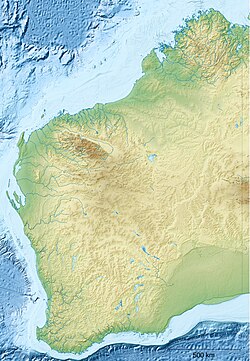Edwards Island, also known as Edward Island, is an island in Western Australia near Lancelin.
The island occupies an area of 0.454 hectares (1 acre) with a maximum elevation of 5 metres (16 ft) and is situated approximately 100 metres (328 ft) off the coast. [1] It is composed of limestone and is linked to Lancelin Island by intertidal and subtidal reef platforms. Both islands are gazetted as A Class nature reserves. [2]
Along with Lancelin Island it is at the southern end of the Turquoise Coast islands nature reserve group, a chain of 40 islands spread over a distance of 150 kilometres (93 mi). [1]
The first European to discover the island was the French explorer Hamelin in 1801 aboard Naturaliste, who named Lancelin Island. [3]
